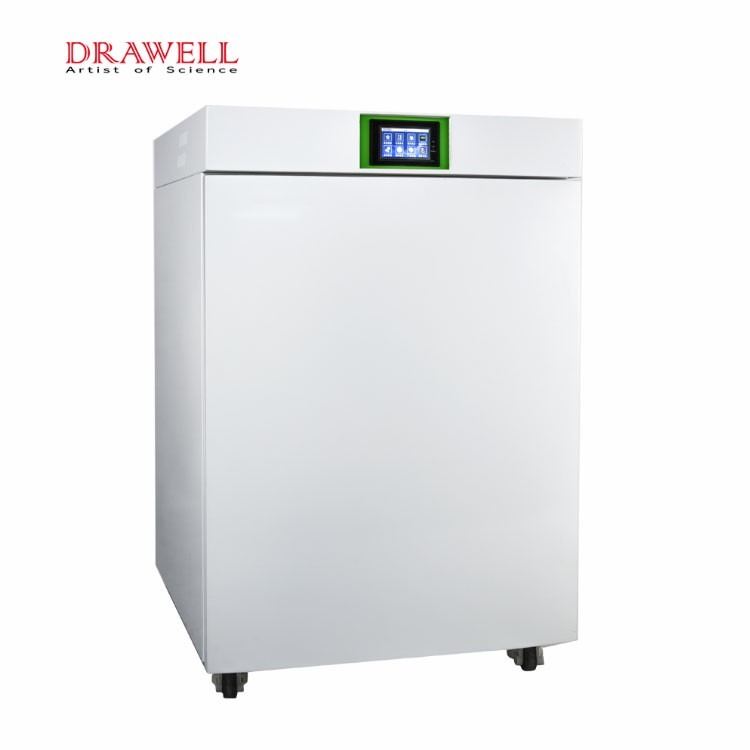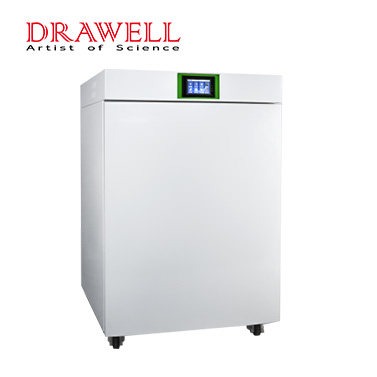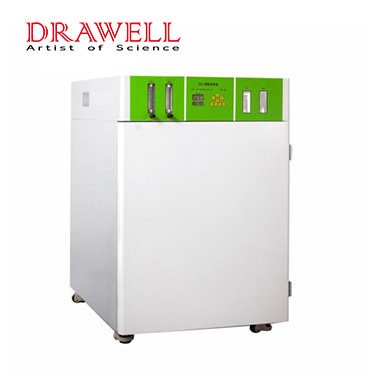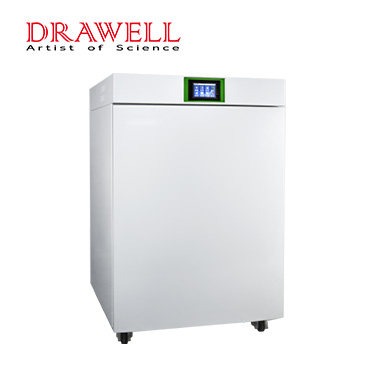In the realm of cell culture research, maintaining precise environmental conditions is paramount for the viability and reproducibility of experiments. CO2 incubators play a crucial role in providing these conditions by regulating temperature, humidity, and CO2 levels. Among the various types of CO2 incubators available, air jacket and water jacket models are two popular choices. Both offer distinct advantages and disadvantages, and the “superior” choice depends on your specific needs. In this article, we delve into the technologies, features, benefits, and drawbacks of both types to determine which is superior for different laboratory settings.
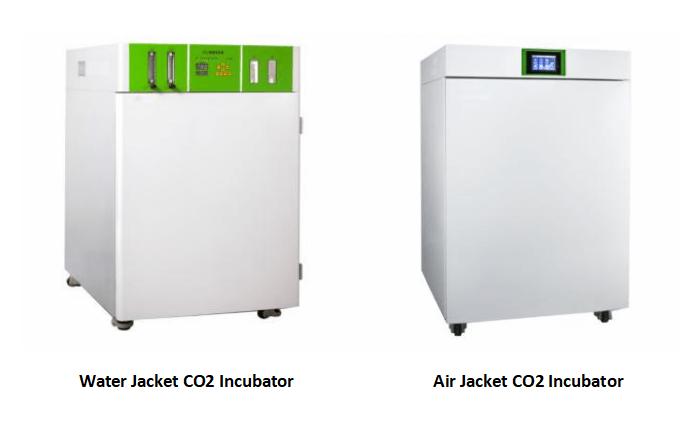
Air Jacket CO2 Incubators
Air jacket CO2 incubators utilize a system of heated air circulating around the inner chamber to maintain a uniform temperature. These models typically feature direct heat distribution, ensuring quick recovery times after door openings and minimal temperature fluctuations. The air jacket technology also allows for precise CO2 regulation and humidity control, making them suitable for a wide range of cell culture applications.
How Does Air Jacket Technology Work?
Air jacket CO2 incubators utilize a sophisticated heating and airflow system to create and maintain precise environmental conditions within the chamber. Here’s a breakdown of how air jacket technology works:
- Heating Elements: Air jacket CO2 incubators are equipped with electric heaters strategically placed around the walls of the chamber. These heaters generate heat to warm the air inside the chamber to the desired temperature for cell culture.
- Air Circulation: A fan, usually located within the CO2 incubator, facilitates the movement of heated air throughout the chamber. This airflow system ensures uniform distribution of heat, preventing temperature variations within the chamber.
- Temperature Regulation: The heating elements and airflow system work in conjunction with a sophisticated temperature control system. This system continuously monitors the temperature inside the chamber using sensors and adjusts the heating elements accordingly to maintain the desired setpoint temperature.
- CO2 Regulation: In addition to temperature control, air jacket CO2 incubators also feature mechanisms for regulating CO2 levels. Typically, these models use infrared sensors to monitor CO2 concentration within the chamber. Based on the feedback from the sensors, the incubator adjusts the flow of CO2 to maintain the desired levels for cell culture.
- Humidity Control (Optional): Some air jacket CO2 incubators also incorporate humidity control systems to maintain optimal humidity levels within the chamber. This is particularly important for preventing desiccation of cell cultures and ensuring their viability.
Overall, air jacket technology in CO2 incubators provides efficient heating, uniform temperature distribution, precise CO2 regulation, and optional humidity control, creating an ideal environment for cell culture experiments. The combination of these features ensures consistent and reproducible conditions, ultimately supporting successful cell growth and experimentation in research laboratories.
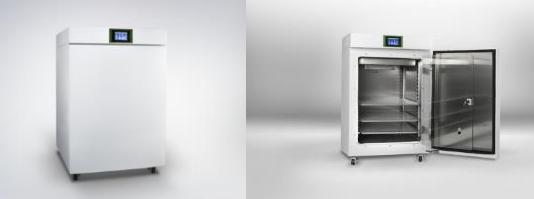
Water Jacket CO2 Incubators
Water jacket CO2 incubators employ a surrounding water jacket to regulate temperature within the inner chamber. The water acts as a buffer, providing more stable temperature control and minimizing temperature fluctuations. These models are known for their excellent uniformity across the chamber, ensuring consistent conditions for cell growth.
How Does Water Jacket Technology Work?
Water jacket CO2 incubators utilize a water jacket surrounding the inner chamber to regulate and maintain precise environmental conditions for cell culture experiments. Here’s how water jacket technology works:
- Inner Chamber: The inner chamber of a water jacket CO2 incubator is where cell culture plates or flasks are placed for experimentation. This chamber is surrounded by a water jacket, which acts as a buffer between the inner chamber and the external environment.
- Water Circulation: The water jacket is filled with water, which serves as a heat reservoir. A water circulation system is employed to maintain the temperature of the water at the desired setpoint. This system may include pumps or fans to circulate the water and ensure uniform temperature distribution throughout the jacket.
- Temperature Regulation: Heat is transferred from the water jacket to the inner chamber through conduction. The temperature of the water is controlled by a sophisticated temperature control system, which continuously monitors the temperature inside the chamber and adjusts the heating elements or cooling mechanisms accordingly to maintain the desired setpoint temperature.
- CO2 Regulation: Similar to air jacket CO2 incubators, water jacket models also feature mechanisms for regulating CO2 levels within the chamber. Infrared sensors are typically used to monitor CO2 concentration, and the incubator adjusts the flow of CO2 accordingly to maintain the desired levels for cell culture.
- Humidity Control (Optional): Some water jacket CO2 incubators may also incorporate humidity control systems to maintain optimal humidity levels within the chamber. This is particularly important for preventing desiccation of cell cultures and ensuring their viability over extended periods.
Overall, water jacket technology in CO2 incubators provides efficient temperature regulation, uniform temperature distribution, precise CO2 control, and optional humidity control, creating an ideal environment for cell culture experiments. The water jacket acts as a stable heat reservoir, ensuring consistent and reproducible conditions for cell growth and experimentation in research laboratories.

Comparative Analysis
When comparing air jacket and water jacket CO2 incubators, several factors come into play. Temperature and CO2 regulation, humidity control, uniformity and stability of conditions, energy efficiency, maintenance requirements, and cost considerations all influence the choice between the two types. Here are some detailed aspects:
| Criteria | Air Jacket CO2 Incubator | Water Jacket CO2 Incubator |
| Heating Mechanism | Direct heating elements. | Indirect heating through water jacket system. |
| Temperature Recovery | Faster | Slower |
| Temperature Uniformity | Generally excellent due to efficient air circulation. | Good, but may be slightly less uniform than air jacket. |
| Weight and Portability | Lighter and more portable due to simpler construction. | Heavier and less portable due to water jacket system. |
| High-Temperature Capability | Limited due to potential risk of overheating air jacket. | Can achieve higher temperatures due to water jacket cooling. |
| Temperature Stability | Generally stable once set. | Stable, but may require more time to stabilize. |
| Humidity Control | Limited compared to water jacket models. | Provides precise control due to water reservoir system. |
| Maintenance | Requires less maintenance due to simpler design. | May require more maintenance due to additional components. |
| Cost | More affordable due to simpler construction. | More expensive due to additional components and complexity. |
So if you want to buy laboratory co2 incubators, here are the suggestions: air jacket incubators excel in energy efficiency and space-saving design, making them suitable for laboratories with limited resources; on the other hand, water jacket models offer superior temperature stability and uniformity, making them ideal for applications requiring precise control over environmental conditions.

Factors Influencing Choice
The choice between air jacket and water jacket CO2 incubators depends on various factors including:
- Temperature Stability: Both air jacket and water jacket systems provide temperature stability. However, water jacket incubators are known for providing more uniform temperature distribution due to the higher thermal conductivity of water.
- CO2 Regulation: Both types of incubators regulate CO2 levels, but water jacket systems might offer more precise control due to the buffering effect of the water jacket.
- Humidity Control: Water jacket incubators can offer better humidity control because water can act as a reservoir, providing a more stable environment. However, some advanced air jacket systems may include humidity control features as well.
- Contamination Risk: Water jacket incubators may have a higher risk of contamination due to the presence of water. Air jacket incubators might be preferred in environments where contamination control is critical.
- Ease of Maintenance: Air jacket incubators are generally easier to clean and maintain compared to water jacket systems, which may require more effort for water management and cleaning.
- Cost: Air jacket CO2 incubators are often less expensive than water jacket systems, both in terms of initial purchase price and ongoing maintenance costs.
- Space Requirements: Water jacket CO2 incubators typically require more space due to the additional insulation needed for the water jacket. Air jacket incubators might be more suitable for laboratories with limited space.
- Application Specifics: The choice may also depend on the specific requirements of the experiments or applications. For example, if precise temperature control is crucial, water jacket systems might be preferred, whereas if space or cost is a concern, air jacket systems could be more suitable.
Ultimately, the decision between air jacket and water jacket CO2 incubators should be based on a careful consideration of these factors along with the specific needs and priorities of the laboratory or research facility.
Conclusion
There’s no single “superior” CO2 incubator type. Both air and water-jacketed models offer distinct advantages. By carefully evaluating your specific needs in terms of temperature stability, humidity requirements, maintenance considerations, and budget, you can make the informed decision that best supports your cell culture endeavors.

